The Enduring Charm (and Problematic Aspects) of “Love Actually”
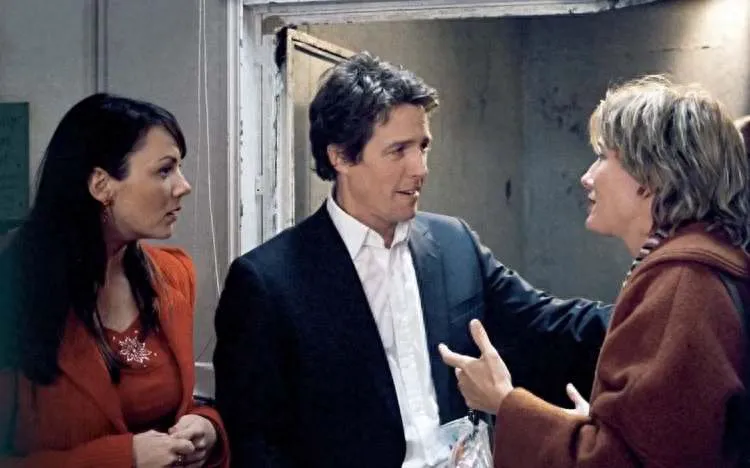
By Cao Xinan Edited by Lu Yiming
To celebrate the 20th anniversary of its release, Universal Pictures and StudioCanal have released a brand new 4K version of “Love Actually.” This edition not only boasts a restored visual experience but also includes a new 30-minute short film featuring discussions and memories from the main cast and production team, filmed recently in London.
This remastered version has already hit theaters in countries like the UK, Germany, and the Netherlands, with a wider global release planned for the Christmas season in December. There were even whispers of a potential re-release in mainland China.
Since its debut in 2003, this romantic comedy’s influence has grown far beyond its British setting, becoming a “must-watch” Christmas classic for audiences worldwide. However, with evolving social norms, “Love Actually” has faced increasing criticism for its outdated portrayals of race, gender, and class.
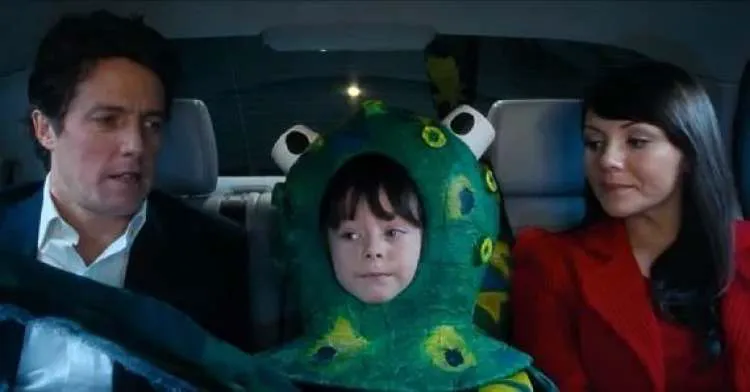
(Image: Still from “Love Actually”)
For those who adore it, revisiting this ode to love every year is a heartwarming ritual to combat the weariness of life. But for others, its dedication to creating a false and cliché-ridden romantic bubble is precisely what makes “Love Actually” so problematic.
Why this divided reception? Perhaps we need to delve into the film itself.
The Rise of a Christmas Classic
“Love Actually” marked Richard Curtis’ directorial debut. Before stepping behind the camera, Curtis had already established himself as a leading figure in romantic comedies, having penned the screenplays for films like “Four Weddings and a Funeral,” “Notting Hill,” and “Bridget Jones’s Diary.”
“Love Actually” continues Curtis’ signature style, showcasing romantic love stories against a backdrop of British charm, sprinkled with lighthearted British humor. This proven formula helped the film, made on a budget of just $45 million, earn a global box office of $247 million.
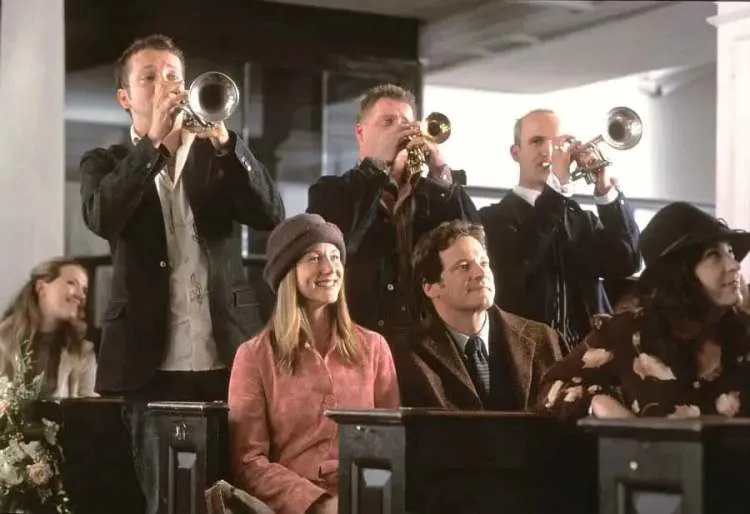
(Image: Still from “Love Actually”)
However, despite its commercial success, “Love Actually” didn’t receive much critical acclaim at the time. Compared to other films released in the same period, such as Quentin Tarantino’s “Kill Bill,” the Wachowskis’ “The Matrix Revolutions,” and Peter Jackson’s “The Lord of the Rings: The Return of the King,” “Love Actually” was seen as a saccharine and unremarkable film.
The New York Times criticized it for “lumbering along with its forced whimsy and compulsive sentimentality, a leaden Christmas pudding from the British factory of whimsy.” The Guardian was even more sarcastic, commenting that Hugh Grant “wears a permanently suppressed, faintly ghoulish grin, which you suspect will break into a huge laugh the moment he hears the word ‘cut’.”
The film’s initial reception was far from its current status as a beloved Christmas classic. This shift in perception is less about the film’s inherent value being proven over time and more about the careful cultivation by the British film industry.
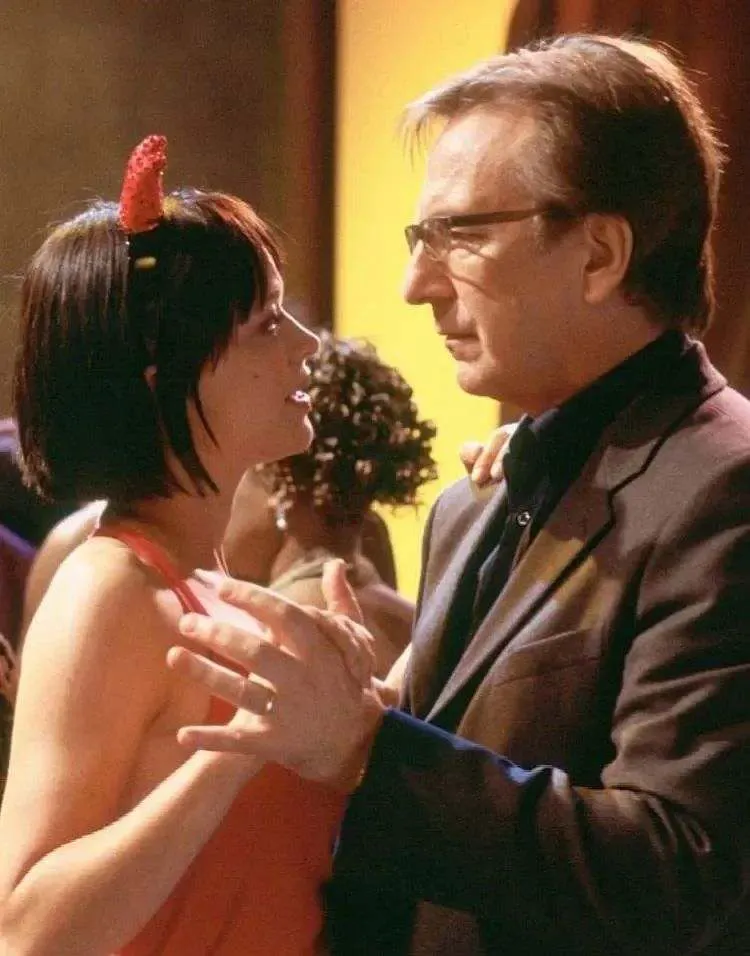
(Image: Still from “Love Actually”)
DVDs and broadcast television played a crucial role in “Love Actually’s” journey to becoming a cinematic classic.
Cinema, as an art form of space and time, can freely manipulate the time and space in which a story unfolds, but it is also highly constrained within fixed temporal and spatial dimensions. Once upon a time, the moment the lights came up in a movie theater signaled the definitive end of a film. However, the widespread adoption of home theaters allowed a film’s life to extend into a broader dimension of time and space.
Since 2003, “Love Actually” has been widely sold on DVD. Limited and collector’s editions, featuring added extras, interviews with the cast and crew, and anniversary short films, have been released to continuously stimulate consumer demand.
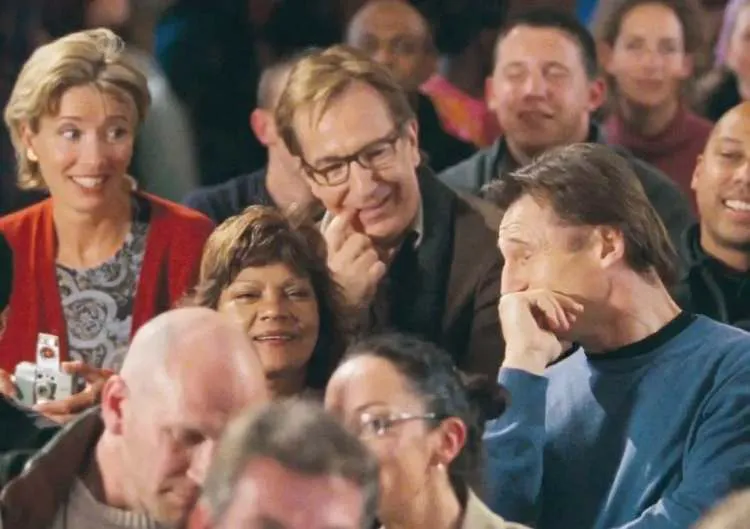
(Image: Still from “Love Actually”)
Beyond these marketing strategies applicable to other films, “Love Actually” stands out as a Christmas-themed romantic comedy, making it a perfect Christmas gift. The carefully designed “Love Actually” DVD has naturally become a perennial favorite on Christmas shopping lists.
Every Christmas season, “Love Actually” is also broadcast on various television channels, making it a holiday ritual with universal symbolic significance, much like “Auld Lang Syne.” This process not only strengthens the connection between “Love Actually” and Christmas but also imbues the film with strong personal emotions and nostalgia through two decades of consistent viewing.
Just as Chinese people know the Lunar New Year is approaching when they hear Andy Lau’s “Gong Xi Fa Cai” in the supermarket, for Westerners, hearing “Christmas Is All Around” from “Love Actually” brings the feeling of snow falling.
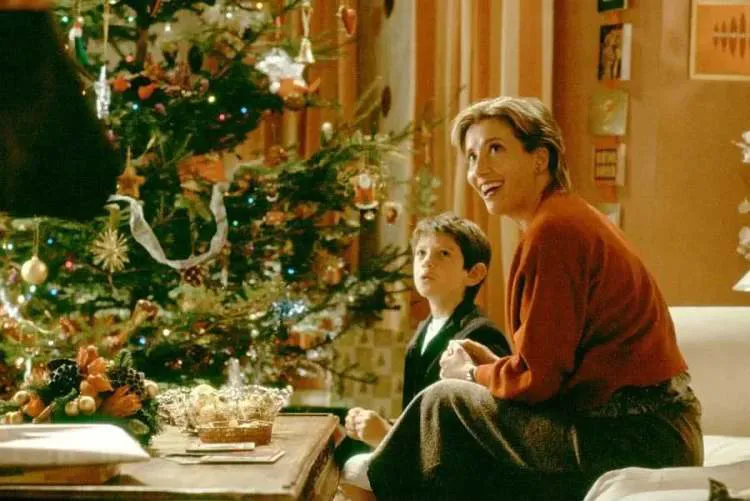
(Image: Still from “Love Actually”)
Love Actually, or “Straight White Male Actually”?
When a commercial family-friendly film like “Love Actually,” which never aimed for high artistic achievement, is elevated to a historical position it doesn’t belong in, it inevitably faces more serious criticism and scrutiny.
As audiences repeatedly revisit the film with the standards of a cinematic classic, the sugar coating on the story inevitably dissolves, revealing a stale core that is difficult to swallow.
Although the “love” in “Love Actually” encompasses different types of emotions such as family, friendship, and romantic love, the love between men and women still occupies the most important part of the entire film. Once the “love” filter is turned off, the male gaze in the film’s handling of love becomes apparent.
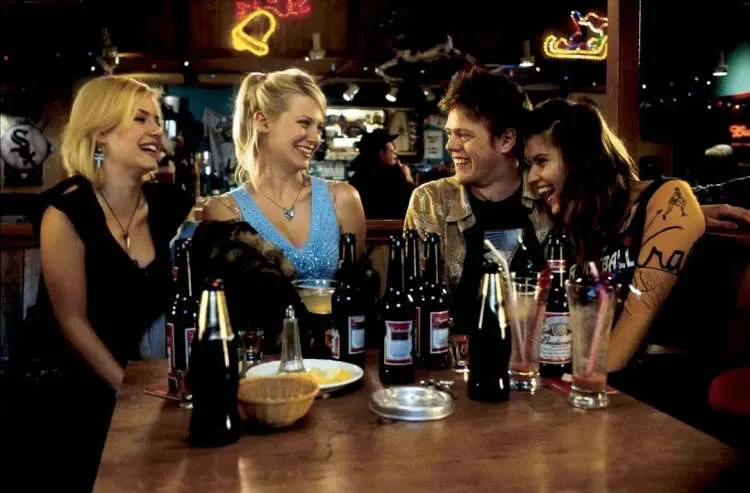
(Image: Still from “Love Actually”)
In addition to jokes about women’s bodies and stereotypes about so-called “masculinity,” the vast majority of love stories in the film are actually based on the physical attractiveness of women. For example, in the storyline of British writer Jamie, after his girlfriend cheats on him with his brother, Jamie goes to a remote house in France to write a novel to relieve his sorrow. There he meets Aurélia, a Portuguese woman who temporarily works as his housekeeper.
An accident causes Jamie’s manuscript to be blown into a pond by the wind (if deliberately writing outdoors with paper and pen can be considered an accident), and Aurélia selflessly jumps into the freezing water to save Jamie’s work. This should be a rather romantic scene, but at this moment, the camera, representing Jamie’s perspective, is not concerned about the manuscript in the water, but calmly lingers on every inch of Aurélia’s body curves after she takes off her coat.
At the end of the story, Jamie comes to Aurélia’s hometown and proposes in broken Portuguese, and Aurélia agrees in simple English - even though they don’t speak the same language throughout the story and have no in-depth communication, and can even be said to know nothing about each other.
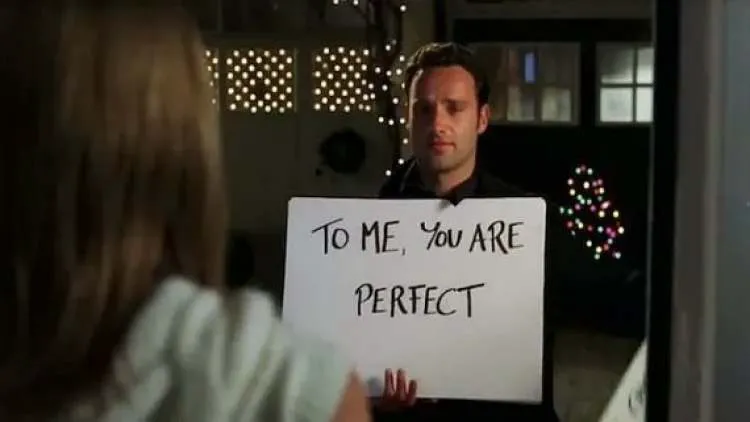
(Image: Still from “Love Actually”)
Photographer Mark’s cardboard confession is considered a famous scene in the film. At the wedding of Mark’s friend Peter and his girlfriend Juliet, Mark, as the best man, recorded the entire wedding video. Because Juliet is not satisfied with the effect of the wedding photographer she hired, she comes to Mark’s apartment to see his version. As a result, Mark’s lens is full of Juliet, including some close-ups that show every detail.
Not only is the audience surprised, but even Juliet is surprised, because Mark has never spoken to her, and she once thought Mark hated her. The director may have read Salinger’s line “Love is wanting to touch but withdrawing your hand,” but the setting of the photographer’s identity is obviously not enough to rationalize Mark’s secretly filmed images. Even Andrew Lincoln, who plays Mark, suspected on set that his character was acting more like a perverted stalker.
If we jump out of the film’s preset perspective to retell these stories, we will find that finding true love in “Love Actually” is so difficult: the British Prime Minister is attracted to his plump female assistant, and when the female assistant is sexually harassed by the American President, he mistakenly believes that the female assistant is flirting with the American President, and is so jealous that he publicly turns against the American President at the press conference and transfers the female assistant away from him; the lecherous unemployed Colin believes that the reason he can’t find a girlfriend is that British women don’t appreciate his charm, so he goes to America alone to hunt for women, and as a result, he returns triumphantly with three American hot girls thanks to his London accent; company general manager Harry almost loses control under the seduction of his female subordinate Mia, and after being discovered by his wife Karen, the kind-hearted first wife finally defeats the evil mistress and wins back Harry’s heart.
(Image: Still from “Love Actually”)
Although these male characters don’t seem very reliable, in the end, every man wins one or more women. “Love Actually” may be a qualified romantic comedy, but men are responsible for the romance, and those parts that are not manly enough are responsible for the comedy.
Has “Love Actually” Aged Poorly?
In recent interviews, Curtis has repeatedly responded to the controversy surrounding “Love Actually,” expressing sadness about the lack of diversity in the film and saying that society is changing, so the film is destined to be outdated at certain moments.
Although this kind of painless reflection seems more like an excuse to push the responsibility to the limitations of the times, if we look back at the era when “Love Actually” was born, the British film industry did produce a large number of similar romantic comedies. It can even be said that romantic comedy was the most recognizable label of British cinema at that time.
Since the 1980s, in order to cope with the global hegemony of American Hollywood movies, the British film industry has produced a batch of films with obvious cultural homesickness symptoms, trying to get rid of the British film’s loss of voice in the global market by awakening the national characteristics and national memories in historical culture.

(Image: unsplash)
Therefore, even though “Love Actually” tells the story of contemporary urban men and women, the pastoral scenery, family gatherings, wedding dances, and happy endings that fill it still directly pursue the British romantic tradition.
In this context, it is not difficult to understand why in 2019, former British Prime Minister and Conservative Party leader Boris Johnson chose to imitate the classic scene in “Love Actually” to call on voters to help Britain leave the European Union.
At the same time, in the mid-1990s, with the rise of the New Labour Party led by Blair, the British government proposed to shape a free, diverse, and optimistic new British image. The contradiction between the two demands ultimately led to an unbridgeable rift in the British film narrative of this period.
In romantic comedies represented by “Love Actually,” the vibrant urban life, harmonious social atmosphere, and prosperous city of London constitute the representation of the new Britain. However, due to its inherent value for the return of national traditions, the London in “Love Actually” that is wrapped in gentleness and love is ultimately just a mirage belonging to the middle class, white people, and men.
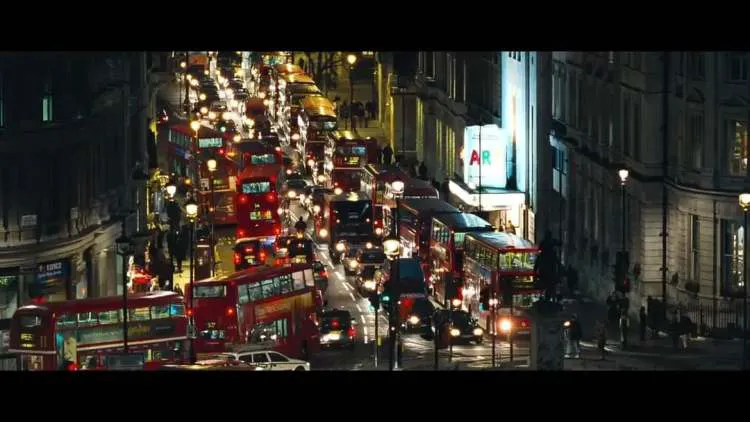
(Image: Still from “Love Actually”)
As Curtis himself admits, “Love Actually” is an outdated film. So, when we are already in a world that is incompatible with “Love Actually,” what is the meaning of watching such an outdated film?
If you remember, “Love Actually” begins with this narration: “Whenever I get gloomy with the state of the world, I think about the arrivals gate at Heathrow Airport. General opinion’s starting to make out that we live in a world of hatred and greed, but I don’t see that. Seems to me that love is everywhere. Often it’s not particularly dignified or newsworthy, but it’s always there - fathers and sons, mothers and daughters, husbands and wives, boyfriends, girlfriends, old friends. When the planes hit the Twin Towers, as far as I know, none of the phone calls from the people on board were messages of hate or revenge - they were all messages of love. If you look for it, I’ve got a sneaky feeling you’ll find that love actually is all around.”
“Love Actually” was filmed in 2002, just one year after “9/11” shattered all the beautiful expectations for the new millennium. “Love Actually’s” re-emphasis on love on the ruins greatly comforted people in trauma.

(Image: unsplash)
Twenty years later, when all kinds of bad news such as economy, war, climate, and disasters once again overwhelm us like a landslide, opening “Love Actually” every Christmas seems to have become one of the few certainties in life - a certainty about love.
After all, it may not be a good enough movie, but love is very, very good.